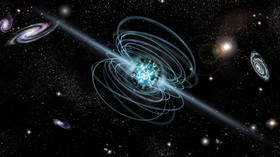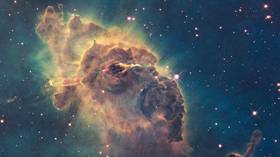Astronomers spot youngest ever ‘baby’ dead star

A star that is a mere 240 years old has been discovered by astronomers after it let out a mighty burst of X-rays. It is the youngest of its kind ever found, opening up ways of better understanding how such stars are formed.
First picked up by NASA’s Neil Gehrels Swift Observatory on March 12, follow-up studies by the European Space Agency have revealed more of the neutron star’s physical characteristics, including those used to estimate its age.
Dubbed Swift J1818.0-1607, the star is a very young magnetar, a rare variety with extreme magnetic fields.
It was formed around the time of the American War of Independence, and is approximately 16,000 light years from Earth, located within the constellation Sagittarius.
It is an important discovery, as astronomers have so far only found 31 magnetars. This is the first witnessed at such an early point in its cycle.
Magnetars are even more dense than typical stars, and even a tablespoon of the substance contained within one would have a mass of over 100 million tons. They are “dead” stars, having exhausted their nuclear fuel.
Because of these intense conditions, weird phenomena occur. Magnetars generate magnetic fields 1,000 times stronger than regular neutron stars.
In contrast, there are over 3,000 known neutron stars. Discoveries such as Swift J1818.0-1607 could help us understand why there is such a disparity between the number of neutron stars and magnetars.
Also on rt.com There could be up to 6 billion Earth-like planets in the Milky Way according to explosive new research“This object is showing us an earlier time in a magnetar’s life than we’ve ever seen before, very shortly after its formation,” said Nanda Rea, an astronomer at the Institute of Space Sciences in Barcelona and co-author on the study.
Like this story? Share it with a friend!















